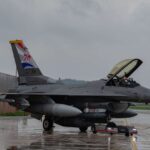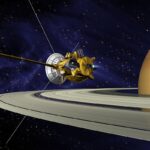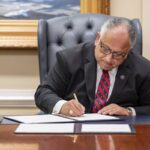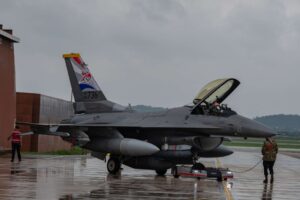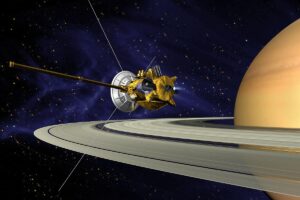Fighter-jets roared off into the night from the aircraft carrier’s flat top, their afterburners glowing.
The scene aboard the USS Carl Vinson – as witnessed by Radio Free Asia journalists who were embedded on the ship – unfolded during recent joint exercises in the Philippine Sea that involved two U.S. aircraft carriers and a Japanese helicopter carrier.
It was a show of force in a patch of ocean where Chinese provocations have increased. Farther west and to the south, in the South China Sea, a Chinese coast guard ship collided with a Philippine fishing boat last month.
Naval officers aboard the U.S. and Japanese ships said the exercises were meant to maintain freedom of the seas and improve cooperation between their navies, not send a warning signal to China or North Korea.
“We just conducted the joint exercise or activities for maintaining the free and operating Indo Pacific Ocean and also for or improving our interoperability, just as our normal activity,” Rear Admiral Kazushi Yokota of Japan’s Maritime Self Defense Force told reporters at a joint press conference Nov. 6 aboard the USS Ronald Reagan, another aircraft carrier, also visited by the RFA journalists.
“We just conducted the joint exercise or activities for maintaining the free and operating Indo Pacific Ocean and also for or improving our interoperability, just as our normal activity,” he said.
For its part, China has bristled at the exercises. The state-run Global Times cited Chinese military experts saying the joint drills “tightened the instability of the region, and definitely are not in the interest of the regional countries.”
Come what may, said U.S. Rear Admiral Patrick Hannafin, the American Navy would be ready.
“We are not directing this exercise for our activities or training against any particular crisis,” Hannafin said during a separate news conference. “Are we ready to respond to any crisis across the world whether it’s this theater or others? Absolutely.”
Radio Free Asia journalists were among several members of the press invited by the U.S. 7th Fleet, headquartered in Yokosuka, Japan, to spend two days aboard ships involved in the exercises that took place in early November.

As they were taken for a helicopter ride over the fleet, the RFA journalists got a bird’s eye view of the two U.S. aircraft carriers – the USS Ronald Reagan and the USS Carl Vinson – churning through the water.
Nearby sailed Japan’s Hyuga, a light carrier equipped with helicopters, an Aegis destroyer and a cruiser escort, among other support ships.
‘Dangerously ill-founded’ presumptions
All told, the United States has 11 aircraft carriers total, and deploying two to the same exercise is somewhat unusual.
Both the Carl Vinson and the Ronald Reagan are Nimitz-class aircraft carriers that have about 5,000 crew and transport more than 60 aircraft, including F/A-18s, with the first of these ships also carrying F-35s.
The exercises should dispel notions that crises in different parts of the world leave the U.S. overextended, said Harry Harris, the former ambassador to South Korea and a retired admiral who once headed the U.S. Pacific Command.
“This is a highly visible depiction of America’s resolve and immense capability to defend our national interests and our allies in the Western Pacific,” he said. “It answers those naysayers who believe that the U.S. is overextended in the Middle East and Europe. Nothing could be further from the truth.”

Gen. Vincent Brooks, a former commander of the U.S. Forces in Korea, said the exercises underscored the importances of alliances in the Asia-Pacific region.
“The U.S. took advantage of two carriers available to practice naval operations in the area,” Brooks said. “The U.S. is a global power and presumptions of the U.S. being distracted are dangerously ill-founded.”
The exercises are meant to reassure American allies in the region and dissuade potential adversaries in different regions simultaneously, said Patrick Cronin, chair for Asia-Pacific Security at the Hudson Institute, a Washington think-tank.

“Chinese PLA (People’s Liberation Army) forces regularly conduct peacetime confrontation operations designed to make the United States, Japan, the Philippines, and others feel anxious and uncomfortable,” he said.
“Beijing wants others to comply with their wishes and to change any behavior they dislike.”
Source : BenarNews

